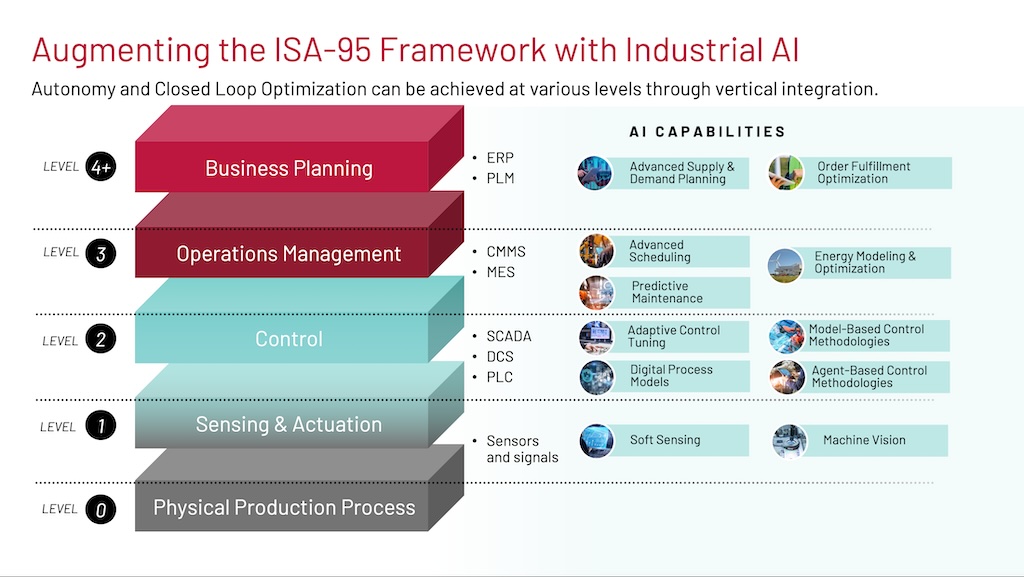A convergence of new business drivers, including compressed delivery schedules and ever-pressing regulatory demands, has intensified the focus on the critical value of information generated from the manufacturing environment.
A convergence of new business drivers, including compressed delivery schedules and ever-pressing regulatory demands, has intensified the focus on the critical value of information generated from the manufacturing environment. This in turn has stepped up the need for manufacturers to create an integrated environment where plant-floor processes and business systems are managed in a collaborative, synchronized manner.
However, many companies do not have an identifiable group that focuses on plant-level information and systems. Information technology does what it does, and control engineering departments do what they do. This type of segregation is no longer acceptable in today’s increasingly integrated manufacturing environment. To truly leverage the data needed to improve performance, companies must tear down the long-standing barrier between IT and plant-floor controls engineering groups.
Mindset, communication
The key to effectively blending IT and manufacturing teams is not the technology; if it were, manufacturers would have already made great leaps forward. The major obstacles lie in mindsets and communication. These two groups often are not well aligned, and may even feel some tension or antagonism toward the other because of core differences in priorities and objectives. IT professionals and manufacturing engineers emerge from different educational backgrounds, possess contrasting skill sets and often have opposing views on how technology is purchased, implemented and maintained.
Yet each has important knowledge and invaluable experience to help energize the enterprise. Therefore, it’s important that companies align every department around a common goal, and find ways to unite IT and automation teams through effective communication, mutual understanding and the willingness to listen to different viewpoints. While many companies are still in the early stages of convergence, the potential benefits are clear.
Benefits of convergence
A recent study commissioned by Rockwell Automation confirmed these benefits. The 2007 study was designed to help manufacturers gain insight into convergence trends and identify barriers, and identify best practices that companies are using to accelerate the process. Among the key findings was the inherent benefits companies gain as they move further along the path toward convergence, including higher efficiency, increased reliability, shorter project timelines and better business continuity.
In one common theme, the study identified management involvement as the most influential and effective driver of convergence. In fact, the analysis showed that in more integrated companies, 90% of the respondents indicated that senior management is “promoting change” or is “somewhat involved.” Conversely, in companies where IT and control engineering are less integrated, 40% of the respondents described senior management as “uninvolved in driving change.”
Other findings shed insight on the positive impact that convergence is having on various manufacturing processes and programs, including plant-level system security, real-time manufacturing and quality programs such as Six Sigma. A more converged framework also allows teams to better collaborate to assess current manufacturing and IT systems, and begin to set standards for integration, data management and future technology investments.
Understanding culturaldifferences
One key contributor to success is how well team members understand and value each other’s attitudes, perspectives and cultural differences. For example, many controls engineers view IT as an organization that is so tied up in documentation and standards it cannot take effective action. Also, project-oriented engineers who often are called in when a problem is hurting production sometimes view IT as impossibly plodding and overly complex. What they may not recognize is that IT projects are often rolled out or standardized globally, so the impact of issues ripples.
Conversely, many IT employees view control engineers as somewhat undisciplined cowboys who go out and fix problems, or conduct projects without regard for future consequences. IT shudders at the high ongoing maintenance costs, as well as the risk of not replacing obsolete equipment just because it’s running a production process. What IT may not realize is how essential control engineers are to keeping the plant running and how expensive even short periods of downtime can be for the company in profits and customer good will.
Technology:a unifying force
While the people may be different, technology can be a unifying force. Today’s control systems are grounded in the same operating systems and networking technologies common in IT. The practice of controls engineering departments “hiding” their computers from IT is thus becoming not only more difficult, but also less productive. At the same time, IT needs to gain a better understanding and appreciation for the unique demands of manufacturing-centric information systems.
Breaking down the barriers to allow IT and controls to come together requires planning, hard work and support from senior management. The good news is that manufacturers can successfully navigate these challenges with a balance of the right technology, solid leadership and open communications. While a transformation of this magnitude can take an enormous amount of time and effort, the long-term returns will continue to pay year after year.
| Author Information |
| Kevin Roach is vice president of software at Rockwell Automation, a position he has held since joining the company in Oct. 2004. Roach has been active in the world of industrial automation for more than 25 years, and is on the board of directors for the OPC Foundation and is immediate past-chair of MESA International. His strategy is to expand plant-wide information software by bringing together control, visualization, information management and MES. |



